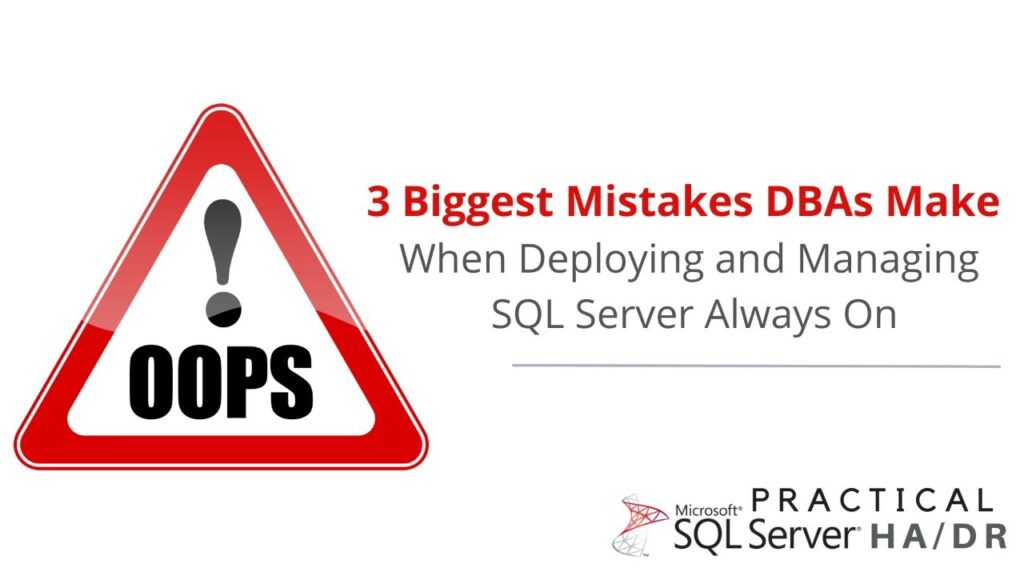I was reviewing a client’s Always On Availability Group architecture last week and spoke to their internal team about their design choices. They brought me in to find out what’s causing unexpected outages and how to prevent them from happening in the future.
The DBA team is top-notch and one of the smartest group of people I have ever had the chance to work with. They have years of experience and worked on the most challenging environments. So, imagine their surprise when the manager brought me in to review their environment. They’ve done all the work to build and maintain the infrastructure. Still, they struggled with identifying the cause of the outages. The senior engineer who designed the system did not even want to be in the same room with me until my last day.
If senior DBAs and engineers with years of experience deploying and managing SQL Server Always On environments still struggle with these challenges, imagine what it feels like when you don’t even know what SQL Server Always On is? And the common theme that I see all the time is that they are making these 3 mistakes – regardless of their technical expertise or years of experience. What’s worse, they’re not even aware of these 3 things until issues like unexpected outages occur.
In this episode of the Practical SQL Server HA/DR Show, I talk about the 3 biggest mistakes most DBAs make so you can avoid them
I’ll be doing this on a weekly basis so make sure you keep an eye out for announcements on my social media profiles (LinkedIn | Twitter | YouTube)

